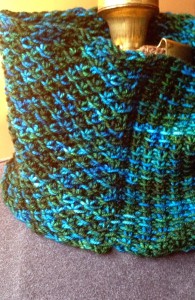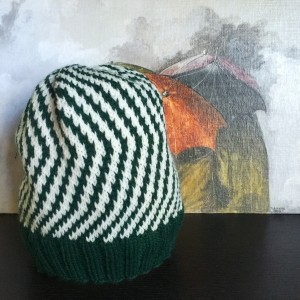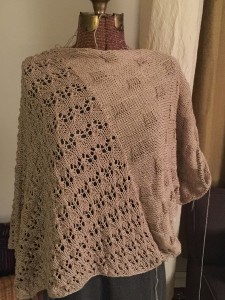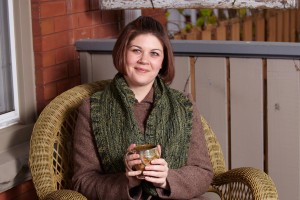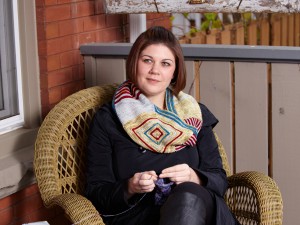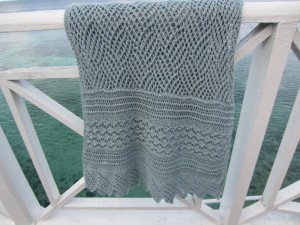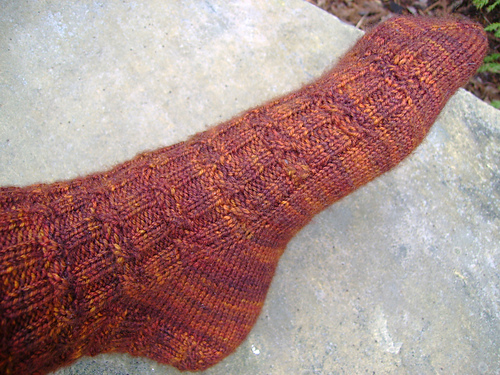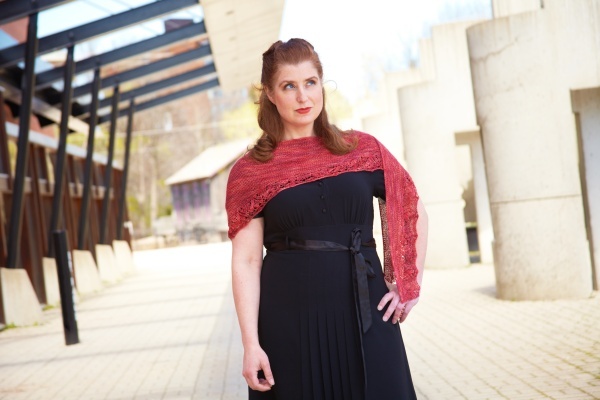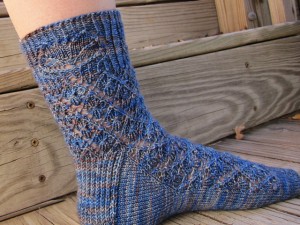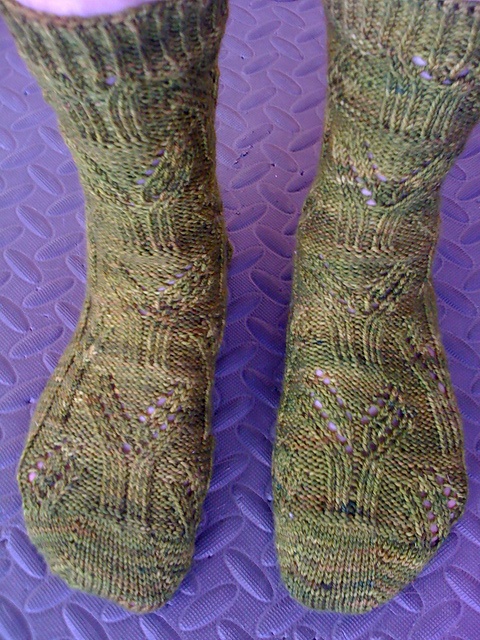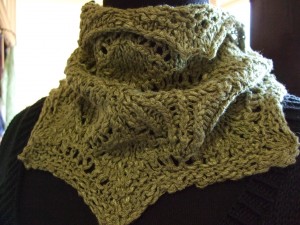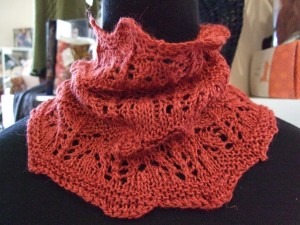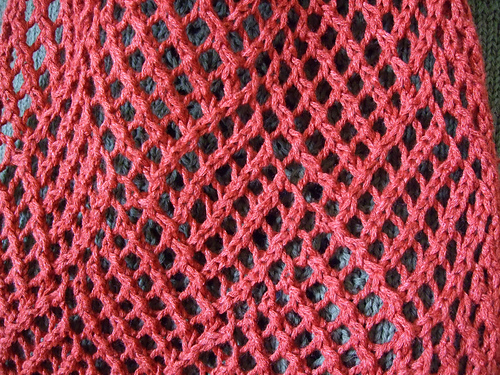Interview: Steven Hicks
Today’s second interview is with designer Steven Hicks of Rodeo Knits, the first in the sub-series of interviews with male designers. I was curious to find out if their views on designing were influenced by their gender so I asked them two additional questions: “Do you find it challenging to be a “man who knits”?” and “Do you think being a male designer helps set you apart/differentiates you as a designer?”
Who taught you to knit/How did you learn to knit?
I taught myself to knit out of Family Circle magazine when I was about 7 years old. My first project was a hat — the pattern was literally a big garter stitch square with a whip stitch seam joining the cast on/bind off and a length of yarn threaded through the garter bumps on one end to close it up. Actually, a perfect first pattern and so much better than an interminable scarf.
How did you get started designing?
Like many knitters/crocheters/crafters, after so many years of practicing your hobby, you start to drift away from following patterns religiously and start tinkering with your own designs. This period for me coincided with a new yarn shop that opened in my hometown. It was a matter of being in the right place at the right time that gave me the opportunity to start teaching classes and designing patterns for those classes.
What inspires your designs?
I’m generally inspired by a technique or a specific stitch and then expanding on that and seeing where it takes me. For example, I was enamored with a star stitch and the texture it created. From there, I designed the three patterns Carriage Trail, Quarry Creek and Ridgeview. Each uses the same star stitch with variations of other textures like cables or lace.
Which comes first – the yarn or the inspiration?
For me it’s inspiration and the yarn comes second. At the same time, the inspiration can be affected by my desire to use a specific yarn, though more likely, it’s a weight of yarn that I want to use. I’m very caught up in sport and light DK weight yarns right now.
What characteristics do you try to incorporate in your designs?
I think because I started from the teaching side of the business, I’m always trying to incorporate a new technique or skill into each design. I want everyone to know that they can do anything in yarn, to refuse to be intimidated by anything. I think the hardest part about any technique in knitting is trying to learn it from a badly written pattern, and writing patterns is hard work. And I’m sure I’ve written my fair share of terrible patterns.
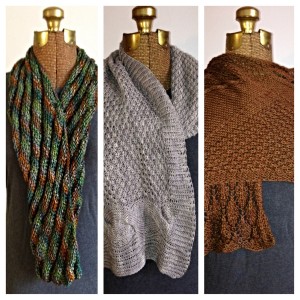
Trio – South Hills, Quarry Creek, Carriage Trail
Do you find it challenging to be a “man who knits”?
There’s an initial novelty in being a man with needles and yarn. There’s also always the “Oh, Rosey Grier did needlepoint” comment. And of course, some yarn shops aren’t able to comprehend that I know what I’m doing. But with Ravelry and the rise of some big name male designers/knitters, that’s changing very quickly.
What is your favourite type of item to design?
Right now it’s neckwear — scarves, cowls, shawls, etc — but I’m also going through a major stranded colorwork phase. So far it’s a series of hats, which just seem so accessible. I just released Whittaker and there are at least three more to follow.
Tell me about “The Vandalia Collection”, what is the story behind this collection?
“The Vandalia Collection” was the first group of patterns I released as a “serious designer.” I wish there were a more interesting story to go along with it. I sat down with a notebook and my sketches of ideas and just put it together, making changes and edits so that I feel like it goes together a little more cohesively and has a wider range of designs. And since I try to name all of my patterns after something related to West Virginia, my adopted home state, I thought Vandalia would be a good name for the collection. Vandalia was an early name proposed for the state of West Virginia.
Do you have an aspirational knit – a complicated/challenging design that you want to knit “some day” when you feel ready?
I’ve been working on a series of sweaters that I’m very excited about, but also very nervous about. There is so much that goes into a sweater design, so many moving parts. 2016 is the year, though.
Do you think being a male designer helps set you apart/differentiates you as a designer?
I’m not sure gender has much to do with a person’s ability as a designer but it is a defining characteristic, albeit one that I can’t control, that does help give me an identity. For example, sometimes I’ll run into someone that I’ve met very briefly at the local yarn shop and they’ll say “Oh, you’re that guy who knits” and it’s a great conversation starter.
What is coming next? What’s in your release queue?
There are three more stranded colorwork hats that I’m refining and reknitting and testing and a cowl that I’m still designing-on-the-needles and now I’ve reached a point where I need to make some big decisions. And sweaters! But that’s down the road.
Your desert island yarn? (if you could only knit with one yarn from now on which would it be?)
“Only one” is a knitter’s worst nightmare! But I almost always reach for Miss Babs’ Yowza. I mean, the yardage is unbeatable, colors are gorgeous and the weight is perfect for a lot of different projects.
Which is your most under-appreciated design?
I really wish that Ruffner was more popular and I know deep down that it comes to the photographs. In a perfect world, I’d love to pull that one away from the world, make it disappear, and re-release it with amazing photos. It’s a lace poncho knit flat but completely seamless thanks to a well-placed provisional cast on.
What’s the one piece of advice you’d like to share with other knitters?
You can knit anything. Knitting is only knits or purls with some variations and sometimes an intentional hole. And an unintentional hole is just a design element.
Any knitting/designing New Year’s resolutions?
It’s definitely sweaters. There are at least 6 designs that I’ve been working on trying to refine and work on all the different sizes and options.
If you could have dinner with one knitting designer (living or dead) who would it be and why?
I’d say Pam Allen (call me!). She always seems to have a timeless sense and accessibility in her designs. And I love the Quince and Co. yarn and what they stand for.
—
View all of Steven’s patterns here. All images copyright Steven Hicks. All images used by permission.
You can find Steven on the following social media sites:
What is the Gift-A-Long? The GAL is a big knitting and crochet designer promotion with prizes and more than 5,000 people participating in a giant KAL/CAL. Come join the GAL group on Ravelry!

